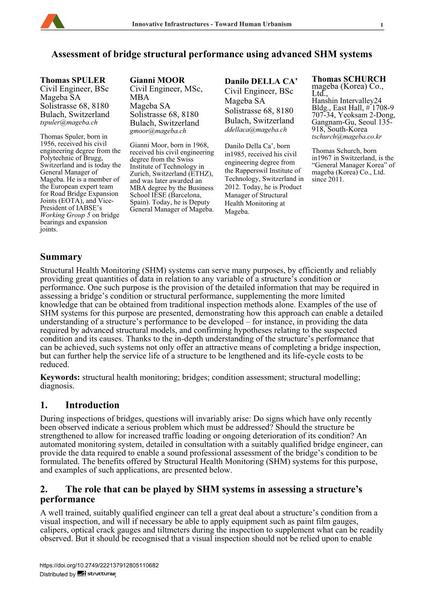Assessment of bridge structural performance using advanced SHM systems

|
|
|||||||||||
Détails bibliographiques
| Auteur(s): |
Thomas Spuler
Gianni Moor Danilo Della Ca' Thomas Schurch |
||||
|---|---|---|---|---|---|
| Médium: | papier de conférence | ||||
| Langue(s): | anglais | ||||
| Conférence: | 18th IABSE Congress: Innovative Infrastructures – Towards Human Urbanism, Seoul, Korea, 19-21 September 2012 | ||||
| Publié dans: | IABSE Congress Seoul 2012 | ||||
|
|||||
| Page(s): | 398-405 | ||||
| Nombre total de pages (du PDF): | 8 | ||||
| DOI: | 10.2749/222137912805110682 | ||||
| Abstrait: |
Structural Health Monitoring (SHM) systems can serve many purposes, by efficiently and reliably providing great quantities of data in relation to any variable of a structure’s condition or performance. One such purpose is the provision of the detailed information that may be required in assessing a bridge’s condition or structural performance, supplementing the more limited knowledge that can be obtained from traditional inspection methods alone. Examples of the use of SHM systems for this purpose are presented, demonstrating how this approach can enable a detailed understanding of a structure’s performance to be developed – for instance, in providing the data required by advanced structural models, and confirming hypotheses relating to the suspected condition and its causes. Thanks to the in-depth understanding of the structure’s performance that can be achieved, such systems not only offer an attractive means of completing a bridge inspection, but can further help the service life of a structure to be lengthened and its life-cycle costs to be reduced. |
||||
| Mots-clé: |
ponts
|
||||
